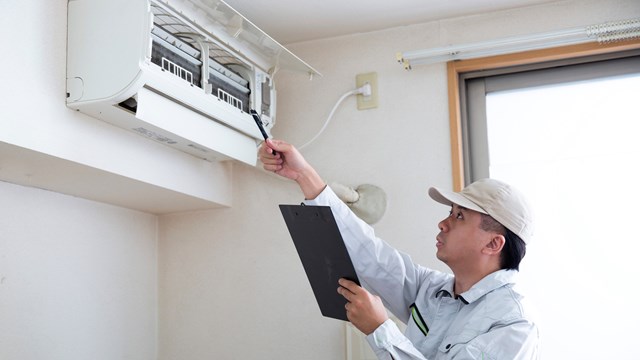As annual and quarterly budgets come up for review, associations are looking to cut additional costs anywhere and everywhere they can. But how much more “fat” can be trimmed from budgets? Surprisingly, there are a few unsung cost saving measures that associations may have overlooked – and with some innovative and cooperative changes, condominiums may still be able to pull some extra cost savings from their financial hats.
Sweat the Small Stuff
Many times the simplest of cost savings measures are the ones most overlooked. However, these measures can yield some substantial cost savings over the long haul and in the short term.
Case in point: the simple purchase and use of power strips can yield savings of 10 percent per year on energy costs; likewise replacing 25 percent of the lights in condominium high-traffic areas with compact fluorescent light bulbs can save about 50 percent on lighting expenses. Additionally, many condominiums and condo owners ignore the quick fix of repairs to drafty doors and windows. Weather-strippingcan reduce heating and cooling bills by as much as 10 percent.
Utilize Your Utilities
Roof and basement insulation can yield a powerful punch in increasing or decreasing energy bills as well. Bill Stack, energy efficiency spokesman for NSTAR, a Massachusetts-based electric and gas utility company, cites insulation as one of the biggest “offenders” of energy loss when he and his teams conductenergy audits of condominiums.
Energy audits, which most electric companies offer, can prove to be a useful tool to any association seeking energy cost savings. Energy efficiency programs and audits vary from state to state but typically are provided free of charge and easily scheduled throughthe condominium’s utility carrier. However, be forewarned that in many cases audits must be approved by the association in order for the assessment to be conducted.
Energy audits typically look at insulation levels as well as the efficiency ofheating and cooling systems, lighting, and the general energy efficiency of the condominium as a whole. Audits typically yield a condominium the potential for double-digit energy savings. “If an association implemented every one of the suggested measures, they could potentially save from 30 to 35 percent on their energy costs,” states Stack.
Other utilities, such as water, can provide avenues of savings as well. A long-term fix to a big cash sink for condominiums is to invest in drought-resistant plants, forgoing costly irrigation expenses. However, if investing in new drought-resistant plants is low ona condominium’s list of expenditures, then improving on an already-existing irrigation system may be what your community is looking for and a moisture sensor for automated sprinkler systems may fit the bill.
The sensor works by determining the existing water content of soil and will shut off timed sprinklers if water content is high (like if it’s already raining). “If you are spending the money on an automated sprinkler system, you want it to run efficiently and use water sparingly,” states Jacob Knowles, LEED AP Senior Project Manager for The Green Roundtable/NEXUS, a Boston-based nonprofit organization dedicated to mainstreaming sustainable design. Moisture sensors are not standard, so associations will need to request them at the time of installation of their system or have them attached to their existing one.
Lessen the Flow, Lessen the Bill
As water costs are predicted to go up, more and more condominiums may bemandating low-flush toilets as a cost-saving measure. The Environmental Protection Agency (EPA) reports that toilet use accounts for roughly 40 percent of all indoor water usage, with standard toilets using up to 3.5 gallons per flush. In comparison, low-flush toilets use only 1.6 gallons of water or less. This being the case, it makes sound economic sense to make the switch; however, condominiums should be forewarned that a short-term return on investment will not be found. “It will take on average up to seven years for a low-flush toilet to pay for itself,” states Knowles.
If associations and owners are looking for a more short-term bang for their water-saving buck, they may want to check into dual-flush converters. This device attaches to toilets enabling them to produce a half flush or a full flush, depending on whether the waste is liquid or solid. Converters may prove a cost effective savings mechanism butassociations will need to do their due diligence as some toilets may prove challenging to attach the converter to.
Water conservation and savings may alternatively be found in the choice of faucets and showerheads condominium owners select. “Water can be a hard area to make money back in the short run. In instances where you have an old system that is pouring gallons of water out, then replacing outdated faucets and showerheads with low-flowones will prove an almost immediate cost benefit,” states Knowles.
Buying in Bulk
Buying in bulk is no mystery. Associations and management firms have long known the cost-saving advantages to placing large orders and reaping the benefits of a price reduction from the supplier. Certain products, such as office supplies, paper products, landscaping materials and plastic products, lend themselves well to bulk purchases. James T. Collins, Executive Vice President/ Director of Property Management for The Niles Company in Quincy, Massachusetts, cautions that while bulk purchasing should provide favorable pricing, the focus must remain on the quality of the product and the service provided by the vendor. If storage space is an issue, pricing should be negotiated to include quick delivery ofmanageable quantities when needed, he adds.
Electricity is a commodity which may not immediately come to mind when discussing bulk purchases. However, due to the deregulation of electric suppliers, certain condominiumsnow have this opportunity. “Condos can participate with a pool of other properties to buy electricity in bulk. There are energy brokers who set up the pool of properties,” explains Collins. Once the pool of properties is formed, data based on historically-averaged energy usage is used to solicit bids and obtain the most favorable pricing.
The Niles Company currently participates in such energy purchasing pools and sees a positive impact on costs. “Typically, we have seen a savings in the range of 5 to 15 percent on the cost of the electricity itself,” observes Collins.
Maintaining, Maintenance
All the hard cost-saving efforts could be undermined by the short-sighted effects of condominiums not properly maintaining high-ticket items. In order to max out the life cycle of such items as the furnace or hot water heater, preventive maintenance needs to be consistently conducted, enabling equipment to perform better and use less energy (in turn saving money). “Everyone needs to realize that they are all joined at the hip in regards to big appliances and they are all joint owners. Condo owners need to do the smart thing, the right thing and maintain the upkeep of these items,” states Ralph Noblin, PE, president of Noblin & Associates, an engineering consultingfirm located in Bridgewater, Massa-chusetts and Dover, New Hampshire.
However, many big ticket items may fall by the wayside with condominium owners categorizing them as aesthetic improvements as opposed to preventive maintenance. Such items as asphalt drives and walkways and exterior painting are two such projects. Yet projects of this nature prove to be just as important an upkeep venture as a boiler or furnace. “Painted wood has a life expectancy to it. It is a fragile product,” states Noblin. “If not painted regularly, the cost will skyrocket as wood will need to be replaced.” Noblin also cites the importance of annually sealing cracks and periodically sealcoating asphalt areas. “Asphalt has a 25-year life to it. Not maintained, youwill cut 10 to 15 years off,” explains Noblin.
Services Rendered
Communities looking to garner short- and long-term saving through preventive maintenance may be wise to“off-load” some typically outsourced services to in-house staff or even volunteer committees. “Each condominium is unique, but generally, the larger the onsite staff, the greater potential for savings by reducing outsourcing of required maintenance functions. Obviously, more specialized tasks will be outsourced, but an optimum balance of in-house versus out-sourced responsibilities should be sought,” believes Collins.
Considering that labor costs make up a big chunk of the overall cost of a service, there would be a substantial savings involved with keeping services in-house, either with established staff or volunteers. “Most communities are not aware that someone in their community may just love gardening and would love to take that on. It may just take one email to get people involved,” states Noblin.
Trash disposal is one such service that would fit into the category of comfortably outsourced. Trash disposalcompanies price out trash removal in one of two ways: a fixed fee or fee by weight. If done by weight, condominiums can do much in the way of offsetting costs by recycling.
In order to make recycling successful, associations would be wise to integrate the process into the existing disposal system. “Design or construct recycling chutes next to the trash chutes. Make the process easy to do, as opposed to having small bins located in not easily-accessible locations,” suggests Knowles. Condominiums using a fee by weight trash removal service are likely not theonly ones to benefit from recycling. “I believe that in the future we will see increasing economic incentives to recycle and pursue other ’green’ initiatives. So putting those procedures in place now will likely produce even greater benefits in the future,” states Collins.
One potentially unsung avenue for cost savings is a necessity for all condominiums: insurance. Some associations, in an effort to offset costs, are conducting insurance audits by re-examining their policy coverage and carriers. However, Jeff Grosser, Vice President/Partner at Rodman Insurance Agency in Needham, Massachusetts, is not a fan of these audits. “Any insurance broker worth their weight is going to be doing annual reviews of coverage. But I am not a big proponent of paring down coverage. Furthermore, shopping around does not automatically equate with cost savings,” states Grosser. Depending on the market condition Grosser suggests participating in such an insurance audit only every two to three years.
One insurance cost-saving option that is increasing in popularity is associations opting to adjust their existing deductible and having owners offset the difference. As Grosser explains, “condo associations are increasing the master policy deductibles and having the individual condo ownerincrease their policy deductible up to the amount of the master policy.” Savings can be had, but Grosser sees merit in this trend “from the risk management perspective more than from the cost savings. It is a good protection for all parties.”
Nickel and Diming to Savings
Whether re-evaluating insurance policies, buying in bulk or preventive maintenance, every cost-cutting effort works towards the common goal of savings. Condominiums may just prove that nickel and diming themselves to savings may be the cost-saving solutionthey were looking for.
Hillary Pember is a freelance writer and frequent contributor to New England Condominium magazine.







Leave a Comment